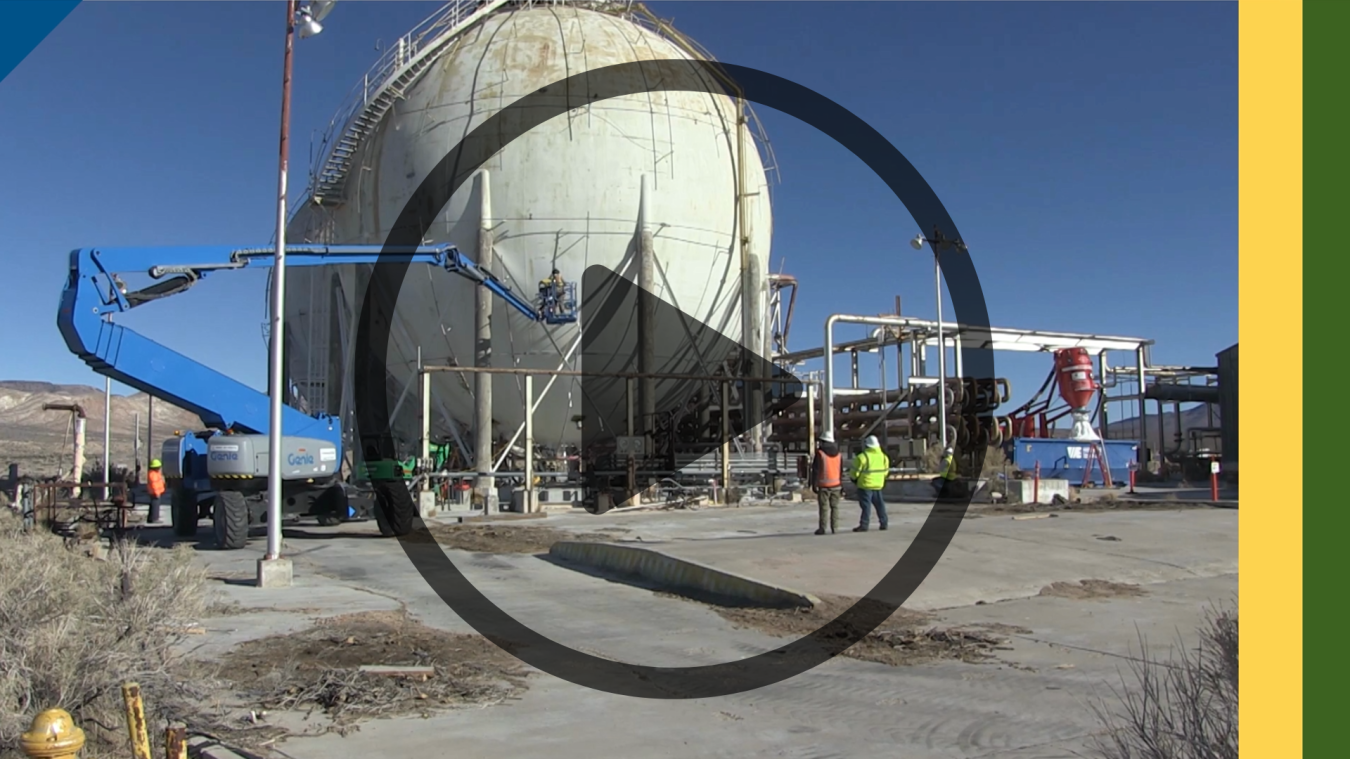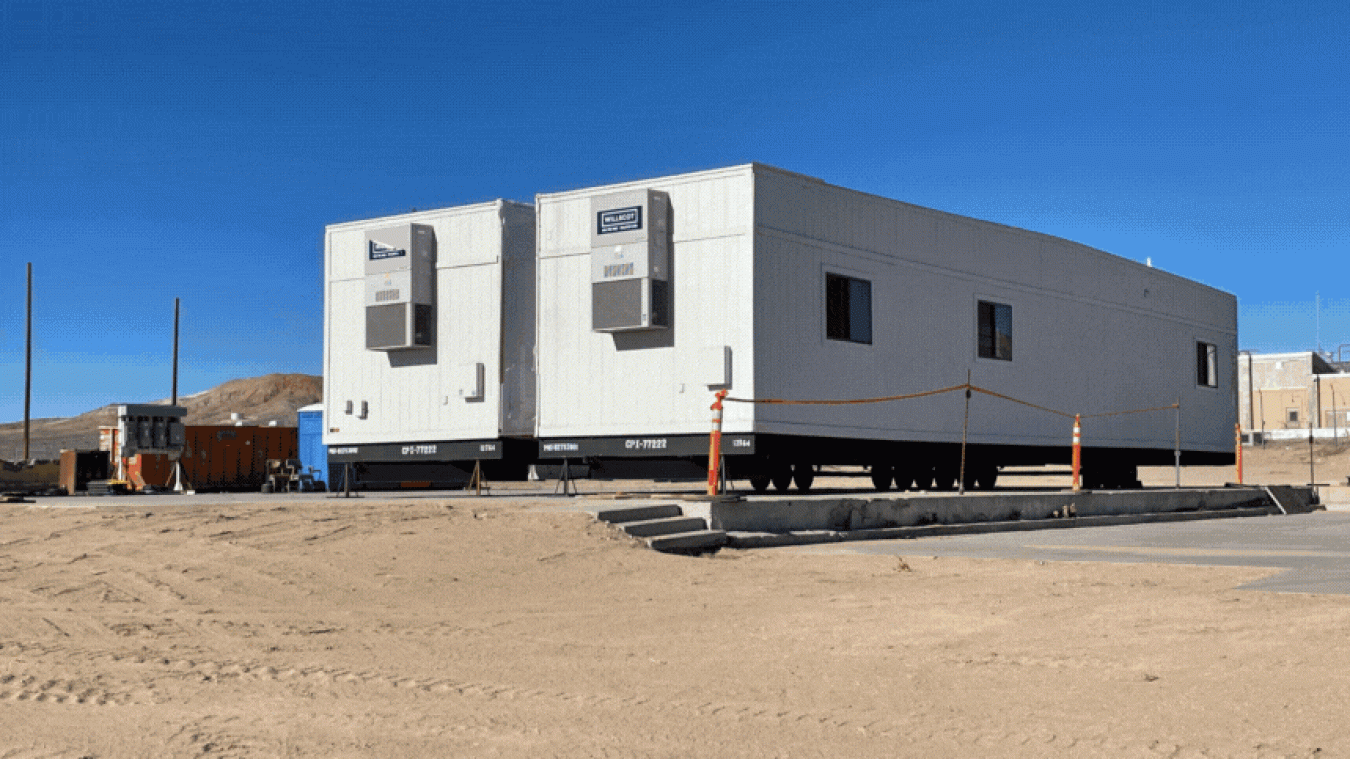The EM Nevada Program is preparing for the next phase of work after successfully completing its top 2022 priority to begin demolition of the Engine Maintenance, Assembly, and Disassembly (EMAD) and Test Cell C (TCC) facilities.
Office of Environmental Management
March 28, 2023
Watch this video to learn more about the EM Nevada Program's preparations to begin demolition of the Engine Maintenance, Assembly, and Disassembly and Test Cell C facilities at the Nevada National Security Site.
LAS VEGAS – The EM Nevada Program is preparing for the next phase of work after successfully completing its top 2022 priority to begin demolition of the Engine Maintenance, Assembly, and Disassembly (EMAD) and Test Cell C (TCC) facilities at the Nevada National Security Site (NNSS).
EM Nevada is getting ready to demolish four buildings at TCC in 2023. That mission goal is among EM’s 2023 priorities focused on reducing the cleanup program’s footprint.

View this collection of photos showing work by EM Nevada Program crews to prepare for the demolition of the Engine Maintenance, Assembly, and Disassembly and Test Cell C facilities at the Nevada National Security Site.
As part of demolition preparatory work, crews placed work trailers at both EMAD and TCC. The trailers will serve as a central point for staff to gather to review daily safety procedures and act as command centers.
Workers also started asbestos abatement at TCC in a few identified areas on the site. They will safely remove and dispose of remaining asbestos in coming months. Identified asbestos areas must be abated before additional demolition at TCC can continue.
Crews also completed an extensive mapping project at EMAD and TCC. Team members used radar technology to create color-enhanced contour maps of the land beneath the sites. The data will help EM Nevada identify underground utilities, which will aid in planning future work activities. It will also provide a much deeper understanding of what lies beneath EMAD, TCC and surrounding land.
At TCC, crews spent a significant amount of time clearing overbrush inside and outside the fence surrounding the facility to identify and remove potential unseen hazards.
TCC and EMAD have ties to historical nuclear propulsion rocket development and testing programs at the NNSS.
Built in 1961, TCC was used to ground test nuclear reactors and engines for rockets. Liquid hydrogen within tanks known as dewars was used to cool reactors after testing took place.
Constructed in 1965 at a cost of more than $50 million, EMAD was then the largest hot cell in the world.
To receive the latest news and updates about the Office of Environmental Management, submit your e-mail address.

